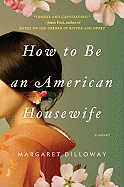
 Margaret Dilloway based this novel on actual events in the life of her mother, who was a Japanese war bride brought to the States by her American husband. Despite the tensions revealed between mother and daughter, this close connection lends immediacy to the story.
Margaret Dilloway based this novel on actual events in the life of her mother, who was a Japanese war bride brought to the States by her American husband. Despite the tensions revealed between mother and daughter, this close connection lends immediacy to the story.
Shoko was a typical Japanese girl, encouraged by her parents to "marry well." Her father, born to wealth, sold everything and became a priest in midlife. Shoko missed her lovely silk dresses but followed her mother's example and did not complain. She fell in love with Ronin, a Burakumin or Eta, a member of a class discriminated against since feudal times. Her brother, Taro, chastised her for this connection, saying that she was bringing shame to her family. A friend of Taro's, Tetsuo, who was in love with Shoko and had been engaged to her before he was caught in flagrante delicto with her roommate, dispatched Ronin, leaving Shoko brokenhearted.
Ever practical, she took inventory of the Americans she had also been dating, showed her father their photographs and he picked the best candidate: Charlie. Shoko's father advised her to ask the soldier to marry her before his tour was up. She did, and they were married almost immediately. Taro was incensed; he'd never come to terms with the Americans winning the war, and the marriage resulted in an estrangement from Shoko.
Fast-forward to Shoko, in her 60s and suffering a heart condition that may have been caused by her proximity to the bombing of Nagasaki. She has just received news that her sister in Japan has died of the same malady. It suddenly becomes imperative to Shoko that she be reconciled with her brother. She is too ill to travel, so she sends her daughter, Sue, and granddaughter, Helena, to carry a letter to Taro. Sue, a single mother, is mired in a dead-end job and ready for a change.
This leads to the best part of the book: an appreciation of the pace of Japanese country life and the Japanese aesthetic with its gentle insistence on finding beauty everywhere, and then, finally, to the revelation of Shoko's long-held secret, previously known only to Charlie. Sue also makes discoveries that will change her life. The end feels hurried, as all these things take place in very few pages.
Threaded throughout the book, as chapter headings, are excerpts from a book that Dilloway's father gave Shoko, The American Way of Housekeeping. It was a guidebook created by American officers' wives for their Japanese housekeepers in 1948, and given to many Japanese brides to teach them how to be successful American wives. Reading it today is an exercise in our own cultural history and how times have changed for women.--Valerie Ryan
Shelf Talker: A multilayered story of relations between mothers and daughters, brothers and sisters and Japanese-American cultural divides.

